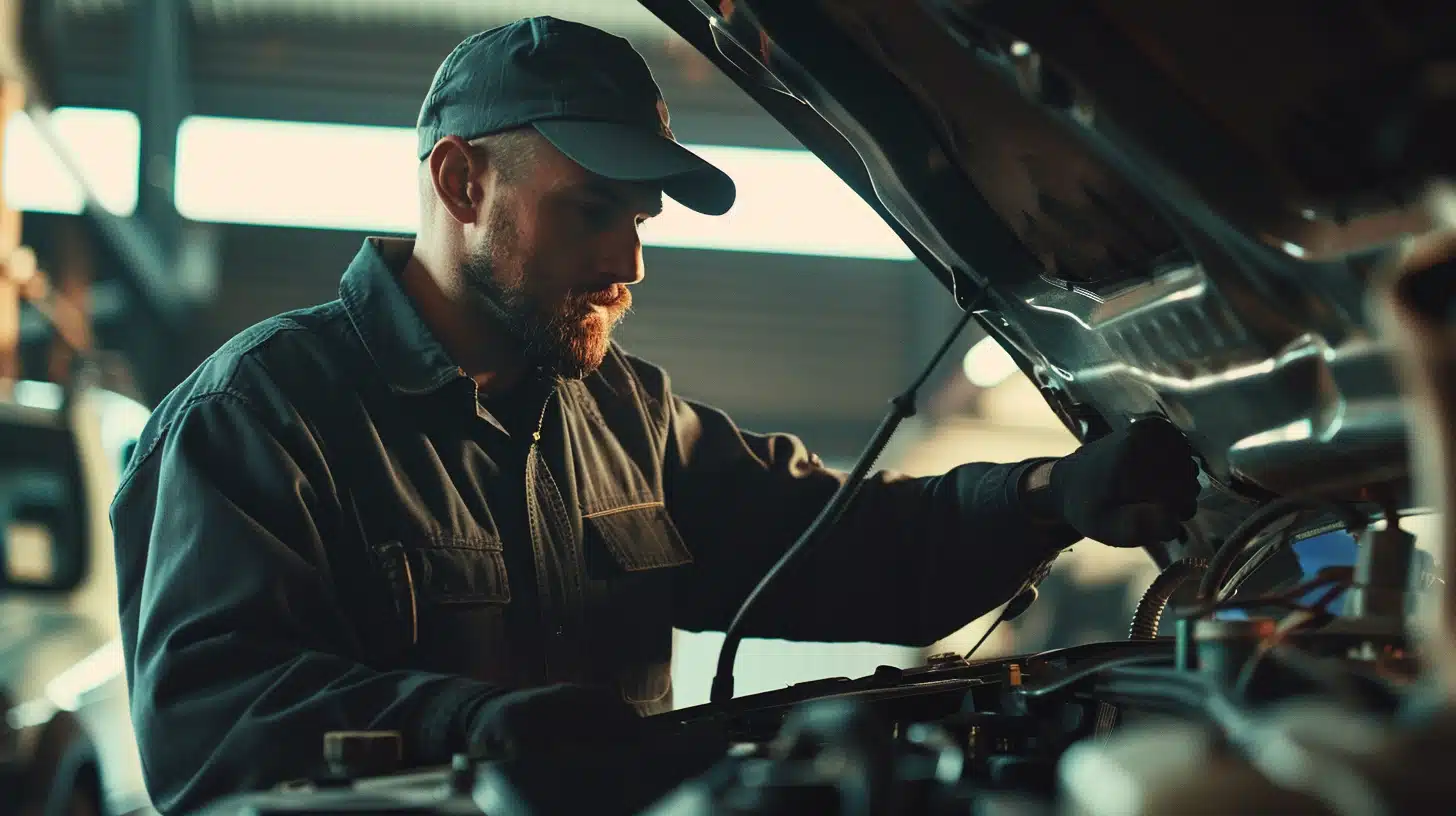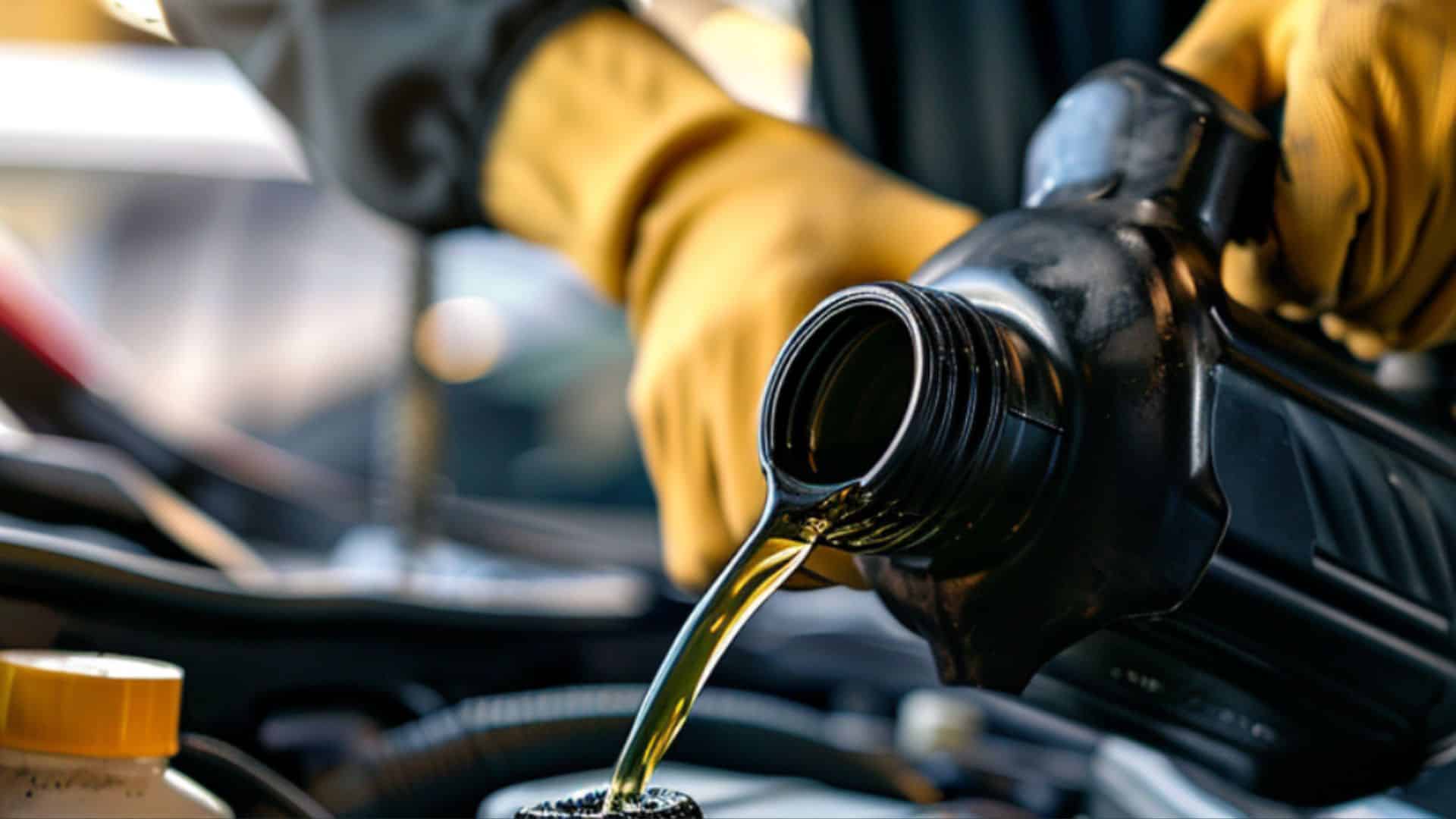Is your car’s brake pedal feeling spongy or less responsive than usual? If you’re worried about the safety and performance of your brakes, it might be time for a brake fluid change.
The cost of a brake fluid change isn’t always straightforward, as several factors can impact the final price, leaving many car owners uncertain about what to expect.
In this blog post, we’ll explore the most common elements determining brake fluid change costs, helping you make an informed decision and keep your vehicle running smoothly.
Get ready to learn what goes into this essential service and how to ensure your car’s brakes remain in top condition without breaking the bank.
By understanding the factors, you’ll be better equipped to maintain your vehicle’s safety and performance.
What Does Brake Fluid Do?

Brake fluid is a crucial part of your car’s braking system. When you press the brake pedal, the fluid transfers the force to the brake rotors, slowing your vehicle down or stopping.
Keeping the brake fluid clean and free of contaminants is important to ensure your brakes work properly and safely.
Efficient brake fluid transfer is crucial for maintaining brake responsiveness and safety.
Brake fluid must remain clean and contaminant-free to ensure proper flow and pressure within the system.
Over time, brake fluid can absorb moisture and become less effective, leading to a spongy or soft pedal feel and reduced braking performance.
Regular brake fluid changes help maintain optimal brake system efficiency.
Now, we will look at the types of brake fluid that are there and their importance.
Types of Brake Fluid and Why They Matter
There are four main types of brake fluid: DOT 3, DOT 4, DOT 5, and DOT 5.1.
Most cars use DOT 3 or DOT 4, which are glycol-based. DOT 5 is silicone-based and shouldn’t be mixed with the others. DOT 5.1 is a newer glycol-based fluid that can handle more heat than DOT 3 and DOT 4.
Let’s take a look at how they’re different from each other.
1. DOT 3 Brake Fluid
DOT 3 brake fluid is hygroscopic, readily absorbing moisture from the atmosphere. As the moisture content increases, the fluid’s boiling point decreases, leading to reduced braking performance, especially under high-temperature conditions like prolonged or aggressive braking.
Its dry boiling point is 401°F (205°C), and its wet boiling point is 284°F (140°C).
2. DOT 4 Brake Fluid
DOT 4 brake fluid is hygroscopic and will absorb moisture over time, gradually reducing its boiling point. It is compatible with DOT 3 brake fluid, and the two can be mixed if necessary, although it is generally recommended to use the type specified by the vehicle manufacturer.
It has a dry boiling point of 446°F (230°C) and a wet boiling point of 311°F (155°C).
3. DOT 5 Brake Fluid
DOT 5 brake fluid is incompatible with glycol-based fluids (DOT 3, DOT 4, and DOT 5.1) and should never be mixed. Mixing these fluids can cause damage to the braking system, leading to poor performance or failure. DOT 5 brake fluid is primarily used in classic and high-performance cars.
Its dry boiling point is 500°F (260°C), and its wet boiling point is 356°F (180°C).
4. DOT 5.1 Brake Fluid
DOT 5.1 brake fluid is designed for high-performance vehicles and those with advanced braking systems, such as anti-lock brakes (ABS) and electronic stability control (ESC). Like other glycol-based fluids, DOT 5.1 is hygroscopic and will absorb moisture over time, requiring regular replacement to maintain optimal braking performance.
It has a higher dry boiling point of 500°F (260°C) and a wet boiling point of 356°F (180°C)
Remember, using the brake fluid specified by your vehicle’s manufacturer is crucial to ensuring optimal performance and compatibility. Mixing different types of brake fluid can cause issues with your brake system.
Major Factors that Affect Brake Fluid Change Costs

One crucial aspect of maintaining your vehicle’s braking system is regularly changing the brake fluid.
The cost of a brake fluid change, also known as a brake fluid flush, can vary depending on several factors.
Understanding these factors can help you budget for this essential maintenance task and ensure your vehicle’s braking system remains in optimal condition.
1. Labor Costs
Labor costs are one of the most significant factors that can impact the overall cost of a brake fluid change. The complexity of your vehicle’s braking system determines the time and effort required for a mechanic to perform a brake fluid flush.
High-performance or luxury vehicles often feature more complex braking systems with additional components or parts that are harder to access.
In such cases, the mechanic may need to work more on your vehicle to complete the brake fluid change, which can result in higher labor costs.
Moreover, the hourly labor rate can vary depending on your location and the type of repair shop you choose.
Dealerships and specialized repair shops typically charge higher labor rates than independent garages. This is because dealerships and specialized shops often have more experienced technicians, use specialized tools, and adhere to strict manufacturer guidelines.
On the other hand, independent garages may offer more competitive labor rates but may not always have the same expertise or access to the latest tools and technology.
2. Vehicle Make and Model
Another important factor that can influence the cost of a brake fluid change is the make and model of your vehicle. High-performance or luxury vehicles may require specialized brake fluids that are more expensive than standard types.
These vehicles often have advanced braking systems with components designed to work optimally with specific brake fluid formulations. Using the wrong type of brake fluid in such vehicles can lead to poor braking performance and potentially damage the braking system.
Furthermore, some vehicle makes and models may have more complex braking systems or components that are harder to access. This can increase the time and effort required for a mechanic to perform a brake fluid flush, leading to higher labor costs.
For example, a high-end sports car with a multi-piston brake caliper system may require more time to flush than a standard sedan with a simpler braking system.
Consult your vehicle’s owner’s manual or a trusted mechanic to determine the appropriate brake fluid type and estimated labor costs for your specific make and model.
3. Service Provider
The type of service provider you choose for your brake fluid change can also significantly impact the overall cost. Dealerships and specialized repair shops often charge higher prices than independent garages or quick-service oil change shops.
This is because dealerships and specialized shops typically have more experienced technicians specifically trained to work on certain makes and models. They also use specialized tools and equipment and often insist on using original equipment manufacturer (OEM) parts, which can be more expensive than other alternatives.
On the other hand, Independent garages and quick-service oil change shops may offer more affordable prices for a brake fluid change. However, it’s important to remember that these service providers may not always have the same expertise or access to OEM parts as dealerships or specialized shops.
When choosing a service provider, it’s crucial to consider factors such as reputation, customer reviews, the quality of parts and service, and the price.
While opting for the cheapest option may be tempting, ensuring that your vehicle receives proper care and maintenance from a qualified technician can save you from more expensive repairs.
4. Geographical Location
The geographical location where you live or choose to have your brake fluid changed can also affect the overall cost of the service. In areas with a higher cost of living, such as urban centers, labor rates, and parts prices may be higher compared to more rural or less expensive areas.
Businesses in these areas often have to account for higher rent, utilities, and other overhead costs, which can be reflected in the prices they charge for their services.
For example, if you live in a major city like New York or San Francisco, brake fluid change costs more than if you were to have the same service performed in a smaller town or rural area.
This is because the cost of living in these cities is generally higher, and businesses must adjust their prices accordingly to remain profitable.
Additionally, in areas with a higher concentration of luxury or high-performance vehicles, the demand for specialized services and parts may contribute to higher costs for brake fluid changes and other maintenance tasks.
Potential Cost-Cutting Measures
There are several ways to save money on a brake fluid change, such as doing it yourself, shopping for the best prices, and using coupons or special promotions.
By being proactive and informed, you can reduce the cost of this essential maintenance task without compromising your vehicle’s safety and performance.
1. Brake Fluid Change: How to Do It Yourself
One of the most effective ways to save money on a brake fluid change is to do it yourself. Suppose you have basic mechanical skills and the right tools.
In that case, you can perform a brake fluid flush at home, eliminating the labor costs of having a professional mechanic do the job.
To perform a DIY brake fluid change, you’ll need a brake fluid bleeder kit, a container to catch the old fluid, and fresh brake fluid that meets your vehicle’s specifications.
Consult your owner’s manual or a reputable online resource for step-by-step instructions on properly flushing your vehicle’s brake system.
2. Shop Around for the Best Prices
Another way to save money on a brake fluid change is to shop for the best prices. Research and compare prices from different mechanics, dealerships, and quick-service oil change shops in your area.
Remember that the lowest price isn’t always the best option. Consider factors such as the service provider’s reputation, the quality of the parts and fluids they use, and the expertise of their technicians.
Read customer reviews and ask for recommendations from friends or family members who have had positive experiences with specific service providers.
3. Use Coupons and Special Promotions
Many service providers offer coupons, discounts, or special promotions that can help you save money on a brake fluid change. These deals may be available through the service provider’s website, social media pages, or local publications.
Some providers may offer loyalty programs or bundle discounts if you combine your brake fluid change with other maintenance services.
Before scheduling your brake fluid change, research and compare any available coupons or promotions.
Don’t be afraid to ask the service provider if they have any current deals or discounts that could apply to your brake fluid change. Even small savings can add up over time.
Final Thoughts
Understanding the factors influencing brake fluid change costs is crucial for maintaining your vehicle’s safety and performance.
By considering your car’s make and model, driving conditions, and the type of brake fluid required, you can plan for this essential maintenance task and avoid potential issues down the road.
Remember to watch for warning signs of bad brake fluid and follow the manufacturer’s recommendations for change intervals to keep your brake system in top shape. Regularly changing your brake fluid may come with a cost.
Still, it’s a small price compared to the expenses and risks of neglecting this critical aspect of vehicle maintenance.
Stay proactive, consult a trusted mechanic when needed, and keep your brakes in optimal condition to ensure a safe and reliable driving experience.

